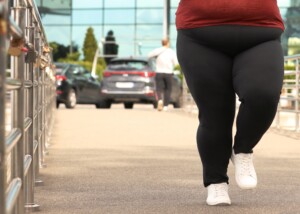What’s the Longest to Wait for CIN 1 to Resolve on Its Own?
Have you just been diagnosed with CIN 1? Then you know this is precancerous tissue that might reverse on its own. But what’s the longest this could take? (more…)
Can You Get PCOS After Menopause for the First Time?
PCOS symptoms vs. perimenopause and aging: And can the onset of PCOS first appear only after menopause? Weight gain, irregular periods, fertility issues…
Why Does Gas Cause a Feeling of Urinary Urgency?
Ever feel like you have to go, but you know that your bladder is empty because you just voided? Then you pass gas, and the urgency is gone.
How Does Ovarian Cancer Cause Vaginal Bleeding?
Have you had unexplained vaginal bleeding and are wondering if ovarian cancer can be the cause?
Why Do Overweight Women Who Don’t Want to Lose Weight Exercise?
Ever wonder why an influencer who embraces her size also exercises? Is she actually trying to lose weight?
Can an Ovarian Cyst Cause Blood in the Urine?
You’ve just discovered what appears to be blood in your urine. Could this be from a harmless ovarian cyst?
Overactive Bladder in Women Only at Night: Causes, Solutions
No matter what you do, you’re pulled out of your sleep every night at least once, often more, by an overactive bladder telling you to get to a toilet.
Gynecological Cancer: Prevention Includes Weight Control
![]()














































































